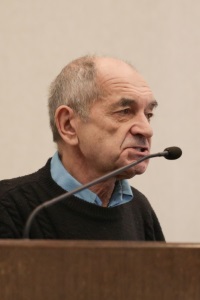The role of wide-bandgap semiconductors in advanced technologies is increasing every year. New experimental approaches provide a rapid transition from large-area planar LEDs to micro- and nanoscale LEDs used in augmented reality systems, optical communication and optical microscopy beyond diffraction limitations.
Wide-bandgap materials of a new generation, such as gallium oxide, define the face of power electronics of the XXI century in applications related to electric vehicles, electric trains, distribution systems, as well as high and low voltage switching networks.
Activities of the Laboratory
The research goal of the project is to find out how high concentrations of point defects and associated elastic stresses in wide-bandgap semiconductors based on gallium oxide can overcome the main disadvantages of such a system: low thermal conductivity, absence of impurities or defects that create effective hole conductivity, pronounced polymorphism, strong metastability of properties. All this currently slows down the introduction of devices based on gallium oxide into real electronic and optoelectronic devices and hinders the commercialization of technologies based on this material.
The scientists of the project demonstrated the possibility of manufacturing a new material and effectively managing its properties using an economical technology of its cultivation. Ga2O3 is a promising alternative to silicon in power semiconductor electronic devices and allows one to work with higher voltages, at higher temperatures and with less power loss.
The group of Professor Vladimir Nikolaev managed to grow thick α-Ga2O3 films with a sufficiently high structural perfection and introduce impurity tin atoms into them, supplying electrons and changing the conductivity of the films in a very wide range. Researchers led by Professor Alexander Polyakov created test diode structures from the prepared films and studied in detail the electronic properties of the material, as well as the electronic structure of the impurities and defects present in it. The results obtained inspire optimism about the prospects of using Ga2O3 in power devices, but very serious additional research will be required to increase the stability of the material and improve its characteristics and their reproducibility.
The research team of the Laboratory of Ultra-wide Bandgap Semiconductors actively cooperates with the University of Kore (South Korea), the University of Oslo (Norway), the University of Florida, the Ioffe Institute (St. Petersburg), Tomsk University, the Kurchatov Institute, etc.
The laboratory will become a Russian coordination center for research of fundamental properties and physics of devices based on wide-bandgap materials: gallium oxide, nitrides of the third group, diamond, silicon carbide, etc. In particular, in the near future efforts will be focused on comprehensive studies of the gallium oxide system.
